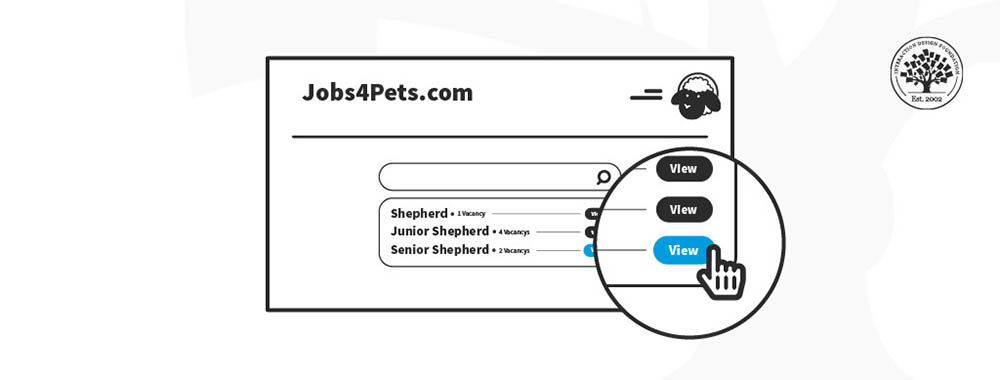Welcome to UX Magic’s supplemental exercise sequence on the Interaction Design Foundation website. UX Magic is a breakthrough book introducing the power of the Semantic IxD approach, but no one ever became a great designer by reading books alone. Hands-on application of both the theory and practices described in the book is the only assured pathway to achieving mastery of this proven technique for increasing both the quality of your UX designs and your speed of delivery.
Within each of the core framework sections of Grammar, Visualization, Flow and Game theory, there are references to the concurrent MatchDog design exercise you can complete while reading the book. Doing so would be very similar to actually being in the classroom over a semester with Prof. Rosenberg.
The instructions and suggestions provided below will guide you through the execution of your own MatchDog interaction design and prototype. For students, this will make a nice additional portfolio piece and demonstrate your mastery of the Semantic IxD method.
Remember, to master Semantic IxD you need to defer sketching out any screens until you have completed, refined and prioritized your product conceptual model definition.
Why You Need a Portfolio
Your portfolio is in many ways your most important asset in the human-centered design world. That’s because it helps you in three powerful ways:
Get an interview for a human-centered design job. It’s virtually impossible to get invited to an interview if you don’t have a portfolio. Your portfolio allows your future employer to get an overview of your work processes, your skills and the results you’re able to create.
Attract clients for freelance projects.
Stay focused on your skills and your career. When you update your portfolio, you force yourself to evaluate your skills and performance and ask yourself tough career questions.
Project Brief
Read the full project brief for MatchDog very carefully—it contains a lot of detail. In your career and practice, you will be lucky if the starting point of a project is this complete.
The goal of the MatchDog service is to help potential pet owners find a suitable dog. Fundamentally, it is a multi-species dating site. Based on a human profile containing owner goals (e.g., protection, companionship, exercise) and lifestyle, the system suggests the best available canine match in the kennel at that time. Additional services include providing educational information, such as caring for your new canine family member. The service is named MatchDog. As a non-profit, it requires donations to survive. This financial aspect (aka the business model) is an important part of the prioritization step along with the IxD grammar definition itself.
Your goal is to create your own version of all of the sematic IxD artifacts that form the synthesis stage of your UX design and then create a highly interactive clickable prototype based on these artifacts that is operational. (“Operational” means it must be sufficiently complete for a task-based formative usability test to be run on it.) In so doing, you will have arrived at a design with the minimum cognitive load on the path to the highest usability possible.
The choice of UX prototyping tool is up to you. However, we recommend that you use heavyweight wireframing tools such as Axure or Balsamiq and avoid less powerful hotspot-based navigation simulation because of the redundant work of creating the same screen in many different data and context states.
You may draw ideas from the examples in the book regarding MatchDog conceptual model options. The book intentionally scaffolds this project with examples and discussion of various options at the grammar, flow and game theory layers. However, you are the designer, and the CM along with the other design artifacts should reflect your desired and optimized grammar. The CM is your idealized view that you attempt to communicate to the user, which can be different from the samples in the book.
In the second project brief involving RockX (if you choose to undertake it), you will start totally from scratch on the definition of the conceptual model. This will be the litmus test that you have fully internalized the semantic IxD method and taken it all the way to completion unassisted on another project (such as this one or one of your own choice).
When Should You Complete the Exercises?
We highly recommend that you undertake each exercise step at the time it is mentioned in the book without jumping ahead. Take a few hours’ break from reading to apply what you have just learned while it is still fresh in your mind, and you can easily refer back to the relevant chapter/section. Alternatively, you can read the entire book and then undertake the project exercise.
Document Your Work in Progress
Remember to document each step of this project as fully as you can if you want to use it as a case study in your portfolio. We’re sure you can understand how much easier it is to tell an engaging story if you have photos and illustrations of your work process!

Author / Copyright holder: Teo Yu Siang and the Interaction Design Foundation. Copyright terms and license: CC BY-NC-SA 3.0
References and Where to Learn More
You can learn more about how to create an amazing portfolio in our “How to Create a UX Portfolio” course.











